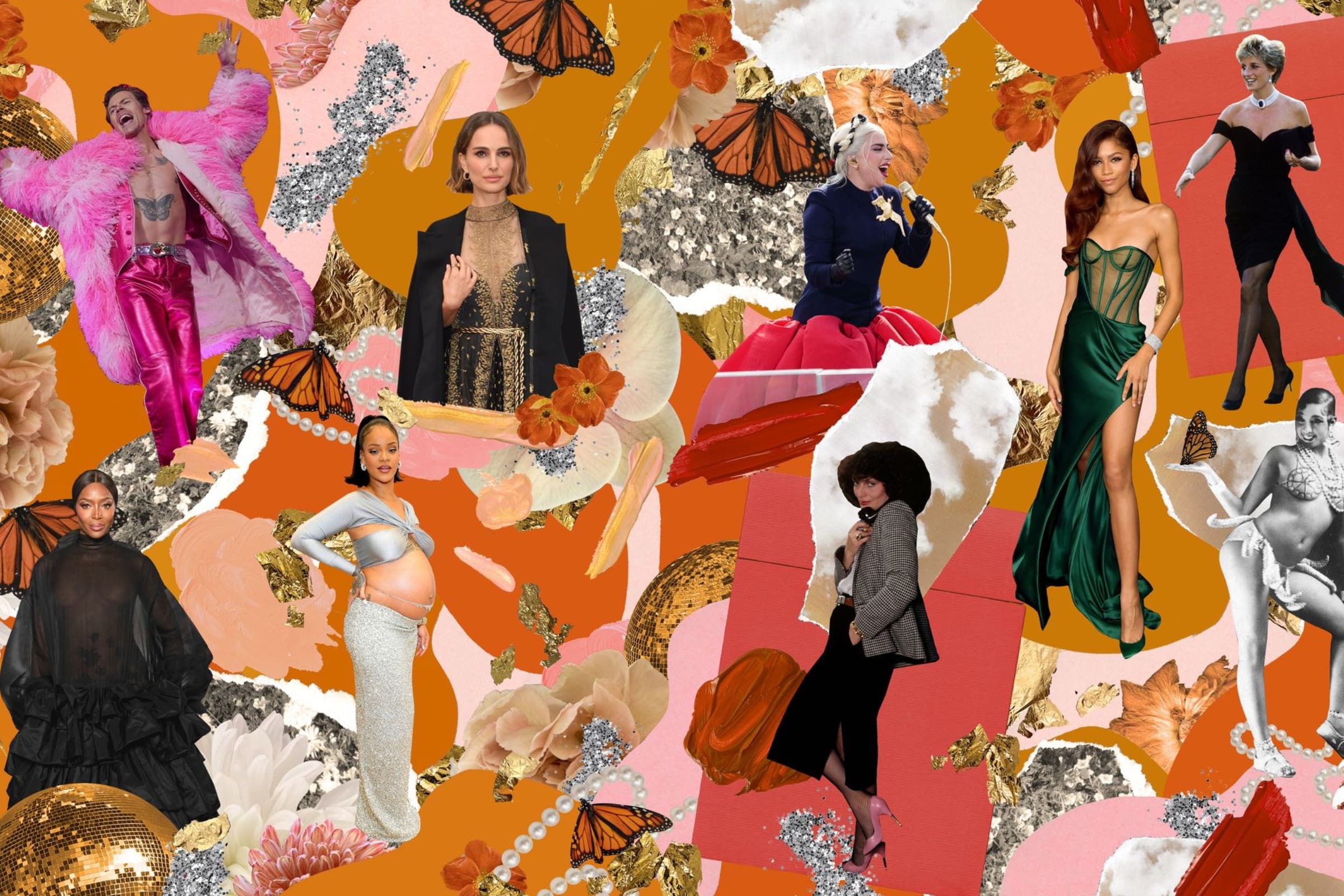In my career as a fashion editor, I often find myself occupying two very different worlds at once. The more extravagant, most photogenic parts of my existence coexist with deadlines, bills and grocery shopping (i.e., the very un-Instagrammable bits). It’s not unusual for me to rub shoulders with royalty, billionaires and Oscar winners at an industry event then take the night bus home. I am both an insider and an outsider, a participant and an observer. The surreal is by now completely ordinary.
In Paris in July, as the most recent round of haute couture collections was unveiled, that surrealism was amplified. Real life and pure fashion fairy tale felt simultaneously further apart and more enmeshed than ever.
Because there, as dresses priced at hundreds of thousands of dollars were presented to the 1% of the 1% in gilded salons and capacious show spaces, the real world felt closer than ever. A little context refresher: In Ukraine, the Russian invasion raged on. In the United States, Roe v. Wade had been overturned just days earlier. In France, the previous month’s legislative elections saw President Emmanuel Macron lose control of the National Assembly and revealed a polarized public. Across the Channel, once bulletproof British Prime Minister Boris Johnson, who had somehow survived scandal after scandal, finally surrendered. (A stark example of the collision of my two worlds: I had the BBC live stream on silent on my phone during one show, eagerly awaiting his resignation speech). On top of that, it was a summer of strikes and catastrophic acts of nature.
To say we live in volatile, terrifying times is an understatement. Local and global politics feel very much like everybody’s business. They always have been, of course, but this is the first time in many of our lifetimes that we’ve witnessed the precarity of supposedly sacrosanct, stable systems and the impact that a few can have on the many.
Putting it clumsily: Politics is everywhere. Putting it bluntly: It’s in. So too, by definition, is fashion. It begs the question: What role does politics play in fashion, and vice versa? Can designers and brands make meaningful political statements? And in our ordinary lives, how much of what we wear is ruled by political motivation? In short, is fashion political? And if it is, should it be?
It’s important to establish what we mean when we say “politics.” There is the official dictionary definition, which pertains to government and legislature, constitutions and elections. But there’s also what I think of as the casual lower-case interpretation, which is broader and less tangible. It encompasses everything from the boardroom (office politics) to the bedroom (sexual politics). Both definitions are about not just asserting our beliefs, but ourselves. And isn’t fashion too about asserting our private selves in a very public way?
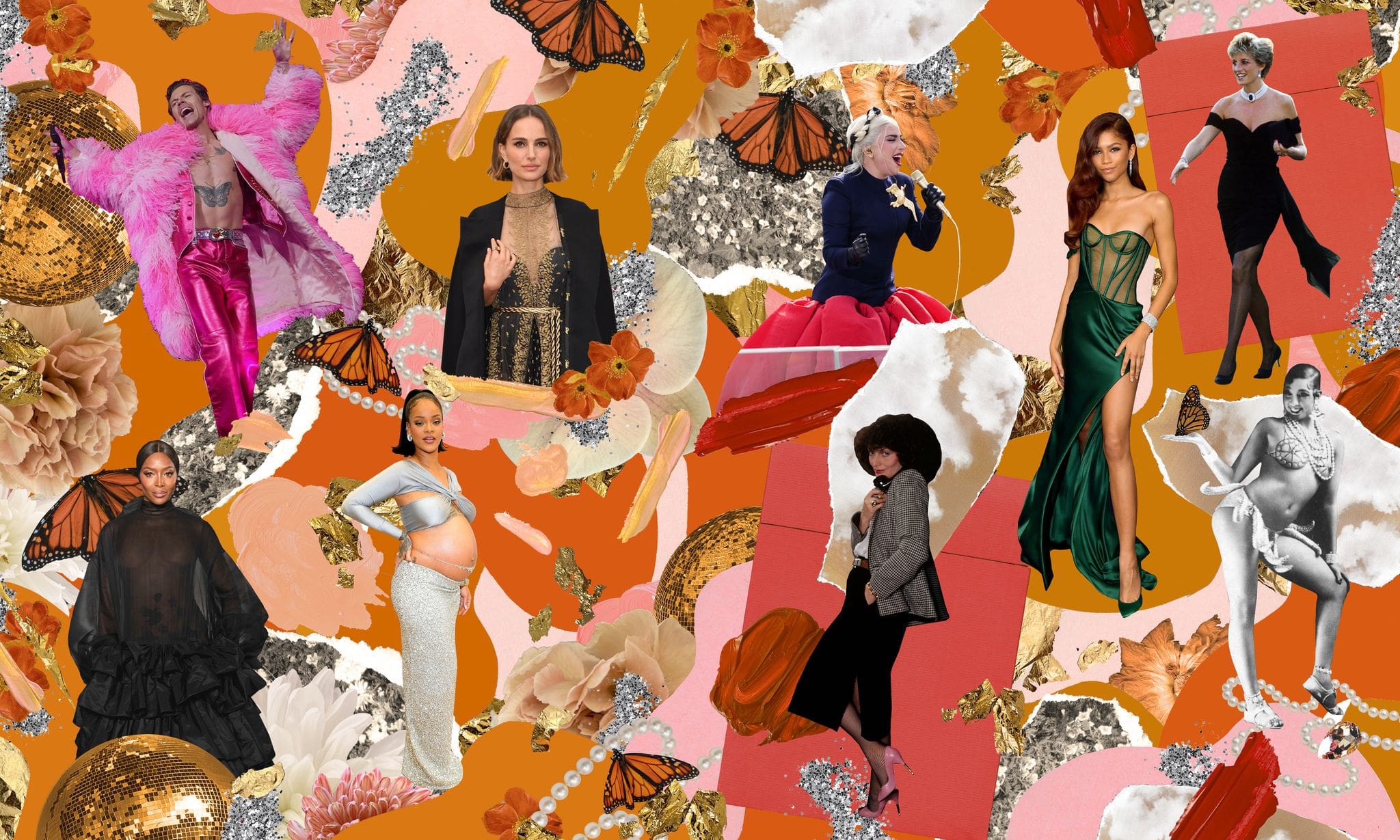
Illustration by Labyrinth of Collages
The most obviously political show of the fall/winter 2022 collections (which were presented in early 2022, available in stores now) was also one of the most personal. Taking place the week following Russia’s invasion of Ukraine, the Balenciaga show was held in a giant snow globe, originally conceived as a commentary on climate change. Models trudged across a windy tundra, some of them dragging XXL bags as if they’d been hastily usurped from their homes. It felt apocalyptic and horrifyingly familiar. The parallels between what was occurring on stage and what was unfolding in real time on the same continent were alarming.
For creative director Demna, this wail about the state of the world was also poignantly particular. On each attendee’s seat was a T-shirt in the colors of the Ukrainian flag and a note from the designer explaining how the war had “triggered the pain of a past trauma” when, at age 10, he and his family were forced to flee their home country of Georgia. That, he wrote, was when “I became a forever refugee. Forever, because that’s something that stays in you.”
“In a time like this, fashion loses its relevance and its actual right to exist,” his note continued. “Fashion Week feels like some kind of an absurdity. I thought for a moment about canceling the show that I and my team worked hard on and were all looking forward to. But then I realized that canceling this show would mean giving in, surrendering to the evil that has already hurt me so much for almost 30 years. I decided that I can no longer sacrifice parts of me to that senseless, heartless war of ego.” In merging the global and intimate, Demna produced one of the season’s most moving, most lauded collections.
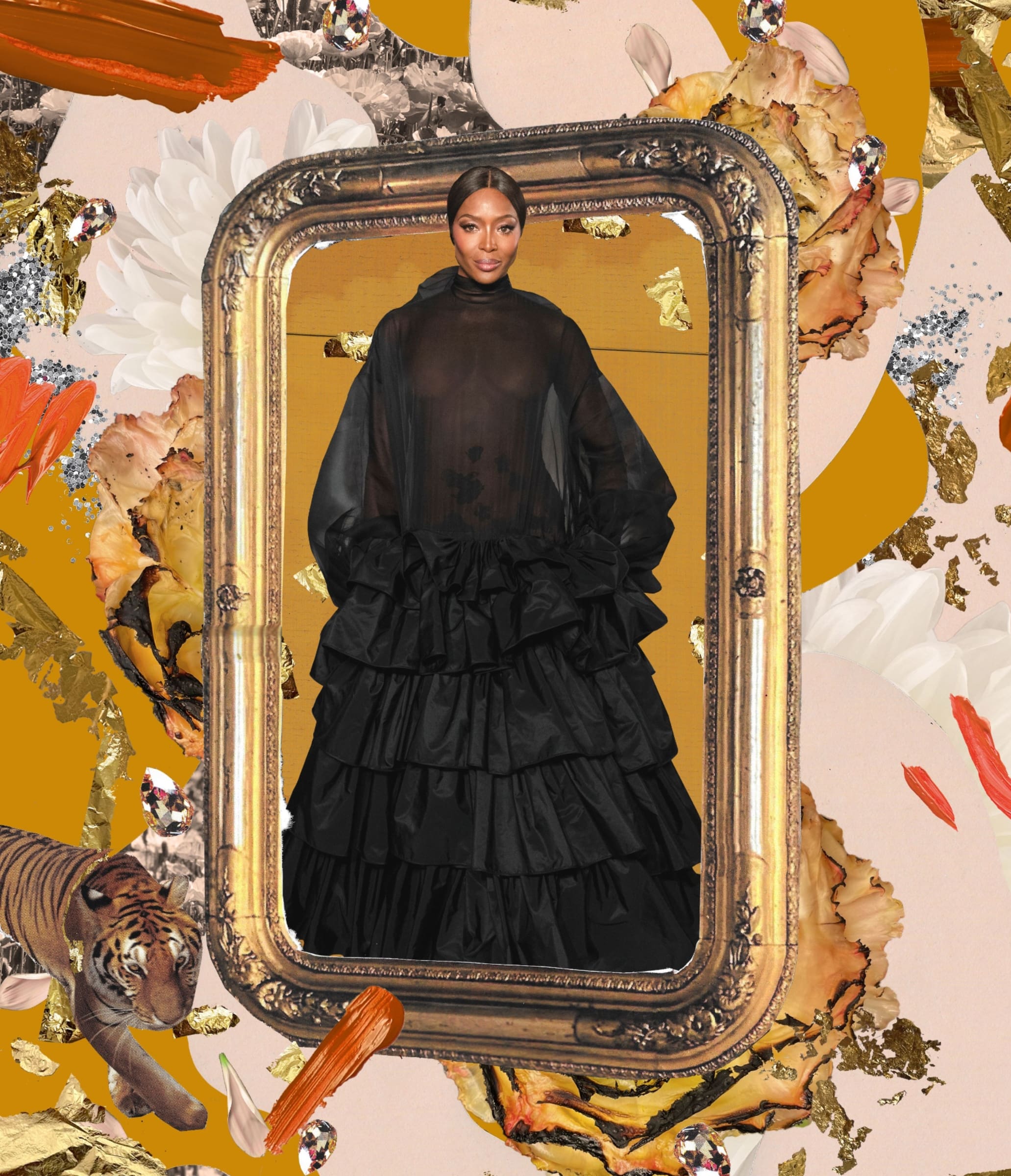
Demna’s Balenciaga show was dedicated “to fearlessness, to resistance, and to the victory of love and peace.” Those sentiments are echoed by Ukrainian designers still living and working there. For them, their work, their business, their very existence is now inextricable from politics.
At home in Kyiv, designer Ivan Frolov was awoken by the sound of explosions the morning of February 24. For the safety of his team, he stopped production immediately. “We were OK with any decision employees made, either staying in Kyiv — half of which did — or moving to other places where they felt safer,” he tells me. After a month, however, something strange happened: “We got used to living with constant sirens and running to a bomb shelter,” he says. “Our team who stayed in Kyiv decided to come back to production and started sewing the unloadings for the vests and rocket carriers for the Ukrainian army. We also transferred some of our sewing machines to another volunteer bulletproof vest production site.” Later, he launched Frolov Heart, a charitable initiative supporting the Masha Foundation’s efforts to help children who have lost their parents.
But for Frolov, who has continued to produce his daring after-dark collections, creation is itself a political act: “From my perspective, fashion does matter as it gives people hope and it can be a powerful platform for change. We’re using it to create, which is the antidote to what our enemies do; they destroy.”
To design is one thing, to shop is another. But according to Katimo’s Katya Timoshenko, whose spring/summer 2022 collection was created in Kyiv “under the sounds of air raid sirens,” that’s exactly what people are doing.
For her, there’s something innately political not just about Ukrainians designing and making clothes, but about buying, wearing and, yes, even enjoying them. When Timoshenko reopened the Katimo store in April, women immediately came in and bought dresses. She was surprised: Why would someone want to buy a new dress when air raid alerts were sounding every few hours?
“I realized that buying a new dress in such a difficult period is a search for support; it’s a life-affirming action that makes you feel alive,” she explains. One customer placed an online order to her home in Kyiv. Even though she was abroad, knowing that a sleek yellow dress would be waiting for her gave her something priceless: hope. “And here, obviously, it’s not about a simple possession,” notes Timoshenko. “It’s much more than buying new clothes.”
Fashion has always been about much more than clothes, but the scale of the industry’s reaction to the war in Ukraine has been unprecedently immense and united. There have been creative responses, like Dior’s Maria Grazia Chiuri collaborating with Ukrainian artist Olesia Trofymenko for her fall/winter 2022 couture collection. The tree of life, a cross-cultural emblem of harmony and circularity, was the starting point.
And when those pieces, with their extravagant folkloric embroidery, appear on red carpets and at galas, won’t they be so much more than just clothes? Won’t they also be gestures of solidarity? It’s worth noting, too, that Christian Dior — whose work Grazia Chiuri is always respectful to — founded his house in the aftermath of World War II. His response? The radical New Look, which spelled not only a new optimism but the reinvigoration of a very valuable industry.
Designers, brands and prominent individuals have responded to the war with public declarations of support (often via social media, which, for good and bad, is the most easily accessible platform to show allegiance with a cause). There’s also been financial action, from fundraising to direct donations. Above all, widespread sanctioning of Russia — and the subsequent departure from the powerful market by brands ranging from Chanel to Zara — is a pertinent reminder that fashion is not just an art; it’s an industry. Money talks.
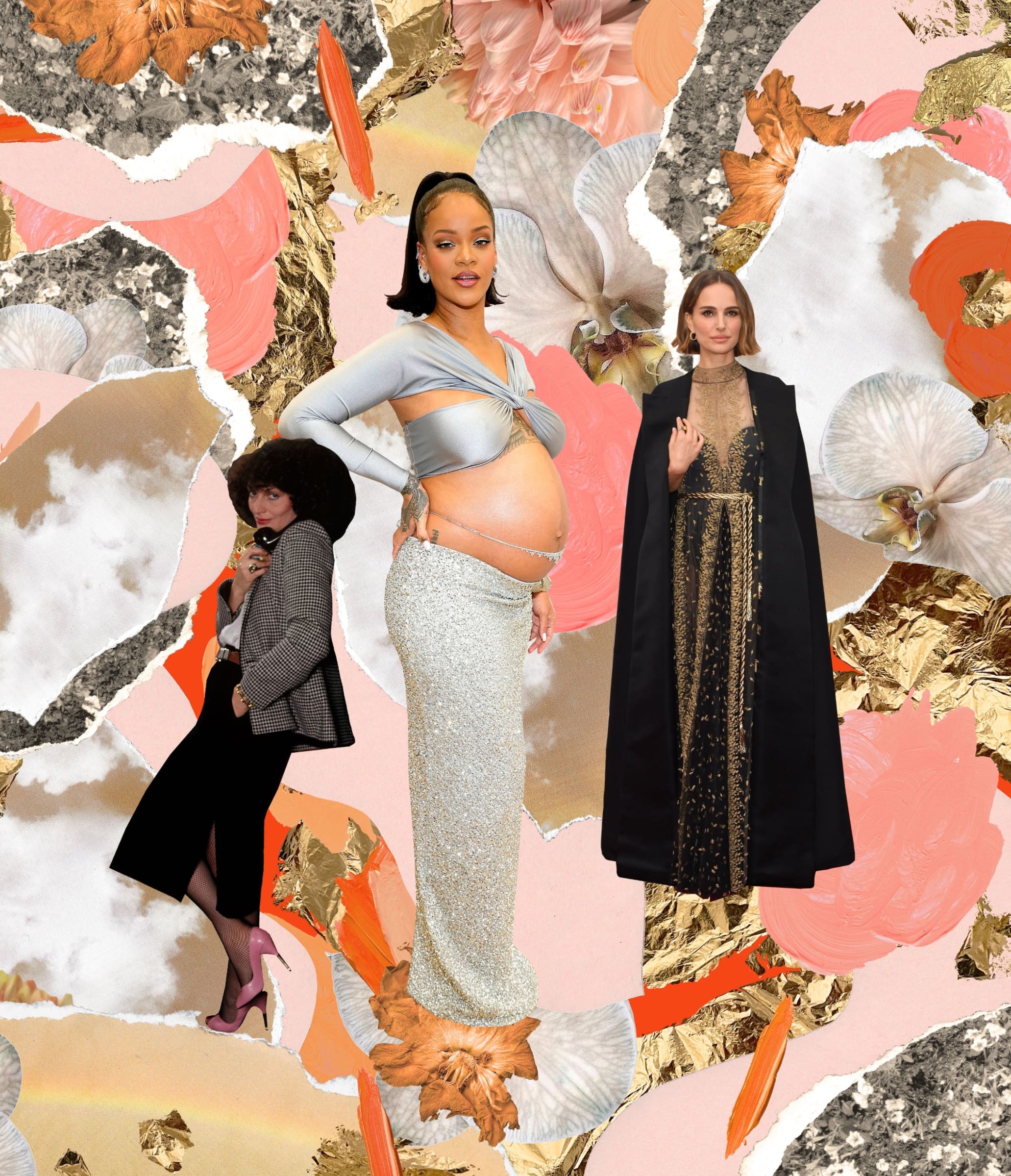
Bolstering fashion’s almost unanimous response to the war in Ukraine is a wider cultural shift, with a spirit of collaboration emerging. Look, for instance, at how enfant terrible Jean Paul Gaultier has handed over the reins of his house to guest designers (most recently, Balmain’s Olivier Rousteing), or how Marc Jacobs proudly posts his outfits, tagging the designers behind them. See Fendace, the ultra desirable partnership of what should be two rival Italian houses, Fendi and Versace (or, for that matter, Fendi’s collab with Kim Kardashian’s Skims line).
Taken with the deliberate you-can-sit-with-us spirit surging through the industry, this has a political undertone. It emphasizes community, unity and a marked move away from the partisan divisions that have marred capital P politics for the past decade.
The design duo Marques’Almeida (helmed by Portugal-based couple Marta Marques and Paulo Almeida) has always felt a duty to do more. For them, contributing to the kind of world they want their daughter to grow up in means helping nurture community. This September, they launched the Marques’Almeida Foundation, which puts independent artisans at the forefront.
“We did some mentoring projects with young designers and artists, and that became our whole life,” Marques explains. “At this point, I think what started very instinctively halfway through our career has now become the forefront of everything we do: this whole idea of sustainability, of being active in and empowering our community and celebrating them so that people are seen. This guides everything else. If the next 10 years are centered around that, we are happy.”
Collaboration is not new, nor is it in and of itself political, but it does have a positive social impact that shouldn’t be sniffed at. This was one of the most uplifting consequences of the pandemic, when designers rallied together for a larger cause. Could it be that they found purpose in PPE, the most literal garment of all?
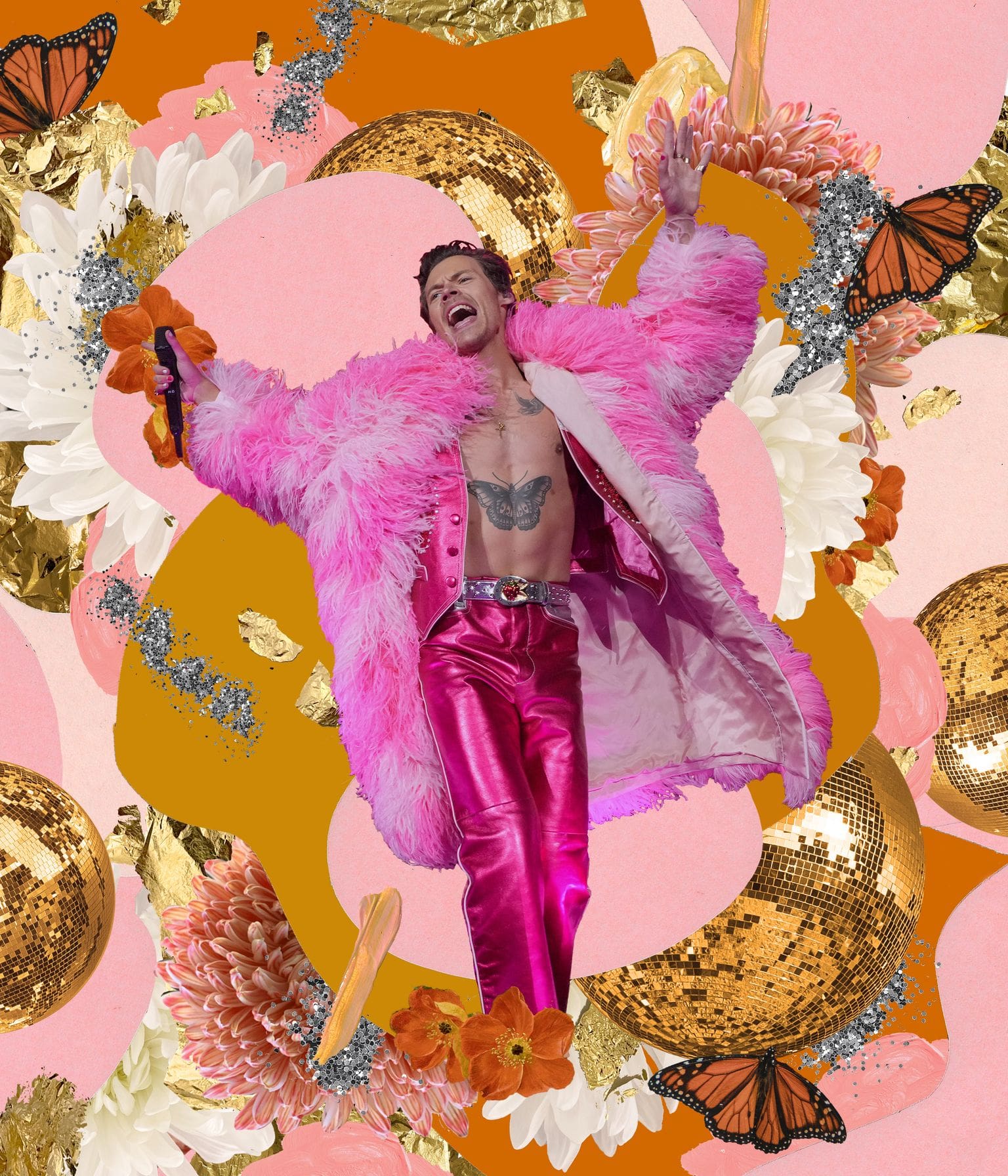
Let’s be cynical for a moment, however, and ponder an important question: Is this all a marketing ploy? Has activism simply become a trend? No doubt many brands have been forced to catch up with the zeitgeist, held to account by #MeToo, Black Lives Matter and the weight of social media, an ever-vigilant watchdog ready to pounce on every inappropriate or insensitive move. Now, to not speak out is to say something; silence can be costly. And while a greater sense of accountability is no doubt positive, it does beg a question of authenticity.
London-based designer Richard Malone is ferociously smart and unafraid to speak out about what he believes is right. A vocal champion of the working class, he focused on sustainability long before it became a buzzword. So does he think that brands have a duty to speak out about the causes that matter to them?
“In many cases, it can be a clear contradiction in terms,” he says with characteristic frankness. “Sincerity is something that’s extremely hard to come by in fashion, when the endgame is to profit the same people it has always profited.” For his part, Malone doesn’t believe that sharing memes or TikToks counts as meaningful action: “Real action happens from real experience and difficult conversations that happen in real life.”
In 2018, the Irish designer was crucially active in his support of repealing his home country’s Eighth Amendment, which effectively outlawed abortion (the law was repealed by a landslide in a historic referendum). When he took part in Selfridges’ Anatomy of Luxury campaign, he wrote “Repeal the Eighth” and “Women’s Rights are Human Rights” on the windows of the luxury London department store. (It was promptly removed, and Selfridges released a statement explaining it’s a “politically neutral safe space.”)
So given the fury surrounding the overturning of Roe v. Wade, does Malone think fashion can meaningfully weigh in on that discussion? “I’m not sure it can,” he confesses. “It happens so often that fashion attaches itself to a cause then the people who are actually doing the work — educators, lawmakers, charity workers — get eliminated from the conversation.” Brands that want to make a difference, he says, should take real action, like making direct financial contributions to nonprofits.
At the time of writing, a multitude of brands, from mainstream to luxury, have pledged formal action. Early on, Patagonia promised to cover bail for any of its employees arrested while protesting the Supreme Court’s decision. Gucci, Levi’s, and Capri Holdings (the luxury group presiding over Versace, Jimmy Choo and Michael Kors) are just a few of the many companies that have promised to help their employees access safe abortion care.
The times we’re living in are as economically unsettling as they are socially disconcerting. For brands, dollars mean dollars, whoever they come from. In other words, to risk alienating customers still takes guts. So, yes, it does matter when Ralph Lauren posts to its 14 million followers on Instagram: “We have always been inspired by the ideal of freedom that underlies the American dream. Everyone should have the choice to pursue the life they want to live.” And it can make a difference when Tory Burch publishes an open letter to her team stating that “I am outraged by the Supreme Court’s decision to overturn Roe v. Wade, stripping women of the constitutional right to make safe, informed choices about their own bodies” (both brands also pledged formal action). Indeed, standing up for something can be both sincere and savvy; one does not void the other.
Given the tempestuous nature of today’s unrelenting news cycle, one almost feels sorry for the fashion execs trying to get it right. To run a legitimate, functioning business you must appeal to as many people as possible; but to appeal to people, you must also find a niche and hone not just an identity, but an entire language of desirability. It’s about culture building.
For some brands, society, taste and the zeitgeist have moved on faster than they have, leaving them looking like the wrong kind of throwback. Consider Victoria’s Secret. Once upon a time, the U.S. lingerie retailer’s annual show was one of the biggest events on the fashion calendar, a razzmatazz no-expense-spared bacchanal of panties and professionally sculpted bodies. Then, a series of events (#MeToo, body positivity, the unraveling of Jeffrey Epstein) converged. We all left the chat before they did.
Or look at Abercrombie & Fitch. That tan, whitened-teeth, ripped, preppy aesthetic was one of the definitive looks at the turn of the millennium. Then, murmurs of racism and sex scandals (outlined in Netflix’s White Hot: The Rise & Fall of Abercrombie & Fitch documentary) plus, frankly, the evolution of collective taste rendered it too irrelevant.
Both brands have done an about-face and deliberately rewritten their aesthetic language to chime with more woke times. For Victoria’s Secret, the Angels are gone and in their place are new advocates like Megan Rapinoe and Priyanka Chopra Jonas who are famous, as The New York Times puts it, “for their achievements and not their proportions.” The company has repositioned itself for the female gaze and not the male one.
Meanwhile, A&F is doubling down on diversity with a social media campaign showcasing the very people it once excluded. A statement from CEO Fran Horowitz, who’s being credited with making the heritage brand cool again, included this promise: “We’re focused on inclusivity — and continuing that transformation is our enduring promise to you, our community.”
The sincerity of these makeovers is up to us, the buying public, to decide. But it’s starkly apparent that, despite multibillion-dollar sales figures, neither of these brands possesses the cultural clout they once did. In the time it took them to rework their mission statements, new names rose to the fore. For instance, diversity and inclusivity have always been part of the DNA of Rihanna’s Savage X Fenty lingerie line. Authentic evolution is not just about optics.
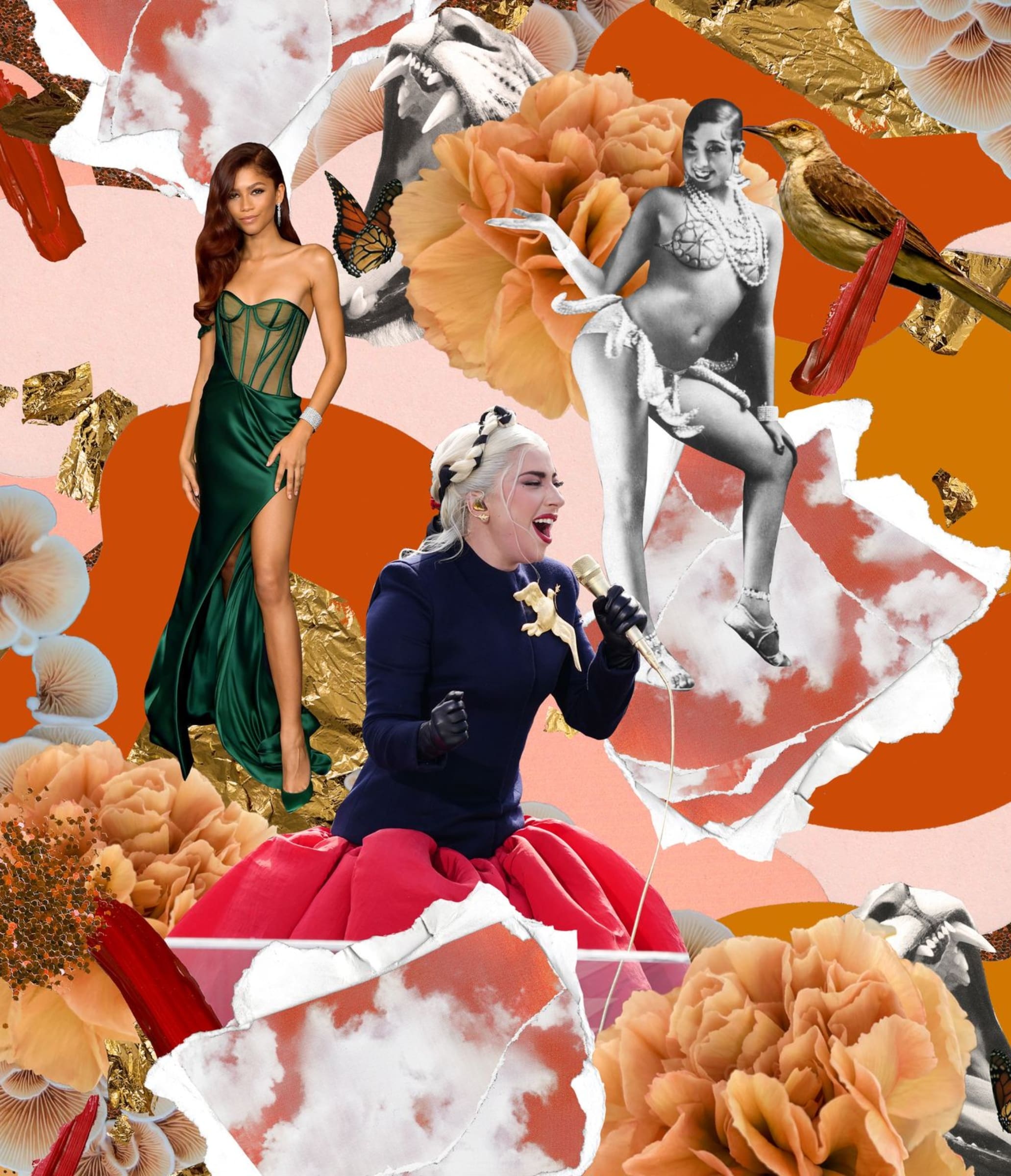
And what of the clothes that you and I wear? Most people I know would be mystified if I suggested that their sartorial choices were in any way dictated by politics. But ask them about the choices they made that morning (look at the choices you made this morning), and it’s unlikely they were governed entirely by practicality. Rather, we all communicate messages through our clothes. It’s how we express who we are, who we want to be. What we wear either unifies or separates us; fashion is our fast-track admission to our chosen communities.
Sometimes our intentions are obvious. Consider Congresswoman Alexandria Ocasio-Cortez’s “Tax the Rich” Brother Vellies dress at the 2021 Met Gala or actress Natalie Portman’s Dior cape worn at the 2020 Oscars embroidered with the names of snubbed female filmmakers.
You don’t need access to bespoke designer creations to say something. Widely available T-shirts, caps and totes fulfill the same literal purpose: That’s hot! We should all be feminists! You are on Native land! These easily accessible, intentionally unremarkable pieces of apparel are “a means of communication to the masses, a walking billboard to communicate important facets of ourselves without saying a single word,” observes Kacion Mayers, editorial director of Dazed Media, which publishes Dazed & Confused, the British magazine that’s been at the forefront of youth culture since 1991.
But the meanings and messages are there, stealthily conveyed, in everything we wear. Often they’re quiet, aesthetically anonymous even, but still a nod and wink to those in the know. As Katimo’s Katya Timoshenko explains, when we buy clothes, we’re buying the “stories that stand behind these things. When I buy a new dress, not only do I want a new piece of clothing, I want to be part of the brand’s world.”
We now choose which brands to align ourselves with purposefully. And it works both ways; companies also carefully consider who they want to be affiliated with. Look at how Fred Perry withdrew its black and yellow polo shirt from sale in North America in 2020 after it was adopted by the far-right group Proud Boys. Or consider how fashion houses publicly distanced themselves from former first lady Melania Trump. (It wasn’t based on how the born clotheshorse and one-time model looked.)
It’s not only about who you don’t want wearing your clothes, but rather who you do. Today, brands are deliberately associating themselves with individuals who aren’t models or celebrities by trade, be it Proenza Schouler recruiting writer Ottessa Moshfegh to pen its fall/winter 2022 show notes or Mejuri jewelry (in collaboration with creative mastermind Jenna Lyons) casting trans actress Tommy Dorfman and journalist Noor Tagouri in its ad campaigns. Choices like this convey a clear message: We are a brand of substance as well as style.
So, no, it’s not a coincidence that Vice President Kamala Harris wore Black designers to the presidential inauguration or that actress Gemma Chan chose to celebrate designers of Asian heritage for the Crazy Rich Asians press tour. And when Beyoncé sings on this year’s tour-de-force album Renaissance that “this Telfar bag imported, Birkins, them shit’s in storage,” it’s a statement about so much more than a handbag; it’s about championing a queer Black designer. For her, Telfar’s Bushwick Birkin (available for less than $300) now trumps the clout of Hermès’s iconic handbag (which has sold for six figures). Beyoncé is vocally supporting inclusion and accessibility while asserting the authority and autonomy of Black people not only to exist in the world of luxury fashion but to shape it.
These are just a handful of examples of the public figures using clothes as shorthand for their values. “Now more than ever, what we buy represents who we are,” says Chinese-born, London-based, couture-trained designer Huishan Zhang. “Understanding how the things we own are made and what brands stand for is important to our clients.”
The red carpet has become fertile ground for political expressions. Just look at singer Harry Styles: At once alpha and camp in his feather boas and pink sequins, he’s redefining masculinity for the mainstream. It’s a pertinent commentary on gender norms. Or consider the archival Versace dress Zendaya wore to the 2021 BET Awards, a deliberate homage to Beyoncé, who wore a shorter version to the same ceremony in 2003 (with its dual sustainable and style-literate credentials, vintage is a smart move). Or recall Kim Kardashian’s ultimate assertion of A-list power: donning the controversial Marilyn Monroe dress for this year’s Met Gala (not just a dress, the dress). It was a play for icon status rather than mere celebrity. On the other end of the spectrum, we have the likes of Selena Gomez, Katie Holmes and Sienna Miller repeatedly wearing Spanish high-street giant Mango — a gesture of accessibility, semaphoring a relatable, down-to-earth quality.
Rihanna is, in my books, an expert political dresser. It doesn’t seem born out of a desire to be provocative, but rather in her complete ease in her own skin. During her pregnancy, she refused to toe the maternity muumuu line. Instead, she leaned into turbo-charged, fashion-fluent glamour with a hefty dose of sexiness, wearing everything from a sheer Dior negligee to a custom Coperni crop top. Even in 2022, this could still shock.
To see not just a woman’s body, but a pregnant woman’s body, in all its unapologetic magnificence felt important. That Rihanna is also a Black woman — a demographic so often told to know their place — is notable. With every look she said, Know my place? This is my place! Rather than fit the narrative, she rewrote it. Don’t tell me that wasn’t political.
I would argue that dressing sexy is, for women, often an intrinsically political move. A short skirt does not mean we’re “asking for it.” In the summer of 1994, Princess Diana’s black off-the-shoulder revenge dress spelled her emancipation from the royal family. In the 1970s, Diane von Furstenberg’s wrap dress became a symbol of sexual empowerment (no zips or buttons made it easier to slip out of a bedroom without waking someone). And today? We have Lizzo, who absolutely refuses to hide her beautiful body — a more powerful expression of a woman’s ownership of her own sexuality than any motivational quote could ever be.
Similarly, when actress Florence Pugh attended the Valentino haute couture show earlier this year in a gown that revealed her nipples, she received sadly predictable, entirely anticipated backlash. But guess what? She owned it and used it as an opportunity to call out the behavior. “What’s been interesting to watch and witness is just how easy it is for men to totally destroy a woman’s body, publicly, proudly, for everyone to see,” she wrote on Instagram. “I’ve lived in my body for a long time. I’m fully aware of my breast size and am not scared of it.”
Pugh’s confidence was certainly admirable, but most must rely on quieter, safer-for-work methods to make ourselves heard. I can’t imagine that any of us have much in common with Kate Middleton and Meghan Markle, yet there are lessons we can learn from how they approach fashion. The duchesses are both expert diplomatic dressers, proficient in the art of the covert sartorial statement. They re-wear pieces to assuage any accusations of Marie Antoinette–esque opulence; they dress in the colors of the countries they’re visiting; they champion homegrown designers.
Since Markle departed England for America, there have been subtle changes in her wardrobe that signify an ambition beyond her current role. To some, they indicate a desire to move into capital P politics. It might look unremarkable, but those capacious handbags and sleek folios she has carried on trips to the United Nations (despite, no doubt, having plenty of people to tote her stuff around for her) speak volumes: I am busy. I have important things to do that cannot wait.

Fashion is a dialogue, not a monologue. For many of us, it’s the easiest tool at our disposal for communicating to those around us not just how we want to look, but how we want the world to look, too. What the explicit style statements and the below-the-radar moves, the thrift shop finds and the extravagant custom gowns all remind us is that fashion indeed does matter.
Which brings me back to July’s couture collections. Texas-born Daniel Roseberry opened the week with a dazzling Schiaparelli collection (coincidentally, the designer behind Lady Gaga’s presidential inauguration look, finished with a dove of peace brooch as a beautifully political statement). He addressed the very purpose of fashion head-on in his show notes.
“All of us who work in fashion know that much of the rest of the world thinks that what we do is silly,” he wrote. “It’s a boring criticism, and we all argue otherwise, but if you think about it, fashion is silly at times. It’s also provocative, upending, challenging and meaningful. It’s breathtaking. It’s beautiful.”
He’s right. Fashion can be all those things and more, all at once. And isn’t there a political purpose in beauty, anyway? It’s hopeful; it says life is worth showing up for. I’m not surprised that post-pandemic, people couldn’t wait to dress up again, sending sales of party dresses and high heels soaring. To wear something solely because it’s beautiful is a gesture of respect not only to oneself but to the world around us.
Another thing I’m familiar with in my role as a fashion editor is the need to defend the existence of fashion. I’m armed with retorts for the skeptics: It’s an industry that employs millions of people globally. It’s an art; if we’re not to question the purpose of a Beethoven symphony or a Picasso painting, I don’t see why we should a Valentino gown. Fashion is more than just clothes; it’s a megaphone and an expression of self. It’s about saying we want to be seen, but also heard.
In anxious times, it’s easy to feel silenced, but fashion can help amplify the voices we do have. Will a pretty blouse make you go to a polling place? No. Does buying a handbag replace grassroots activism? Again, nope. But can fashion help shape the world for the better? Yes, I like to think it can.
Even today, not everyone has the right to wear what they want, how they want. It’s still a privilege to dress with freedom. Yes, fashion can be silly, but there’s also sincerity and substance to be found within that silliness. To think it isn’t political is to miss the point entirely.

